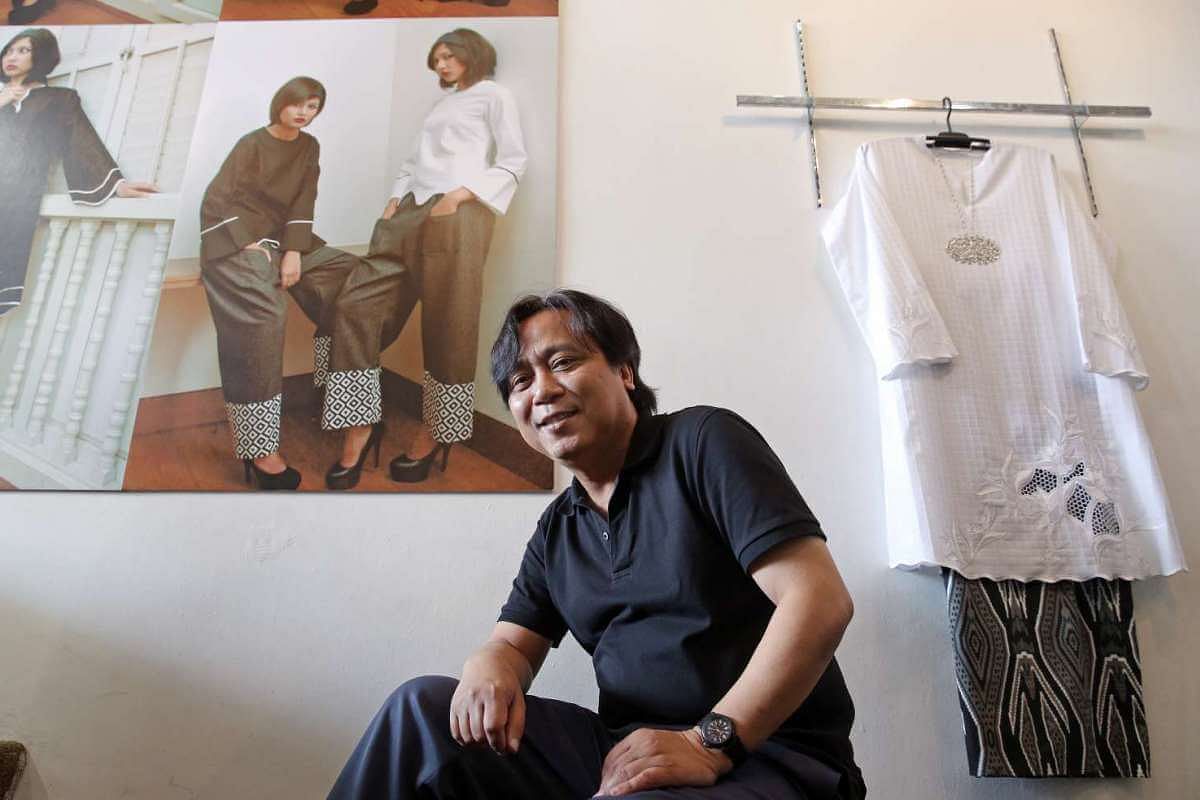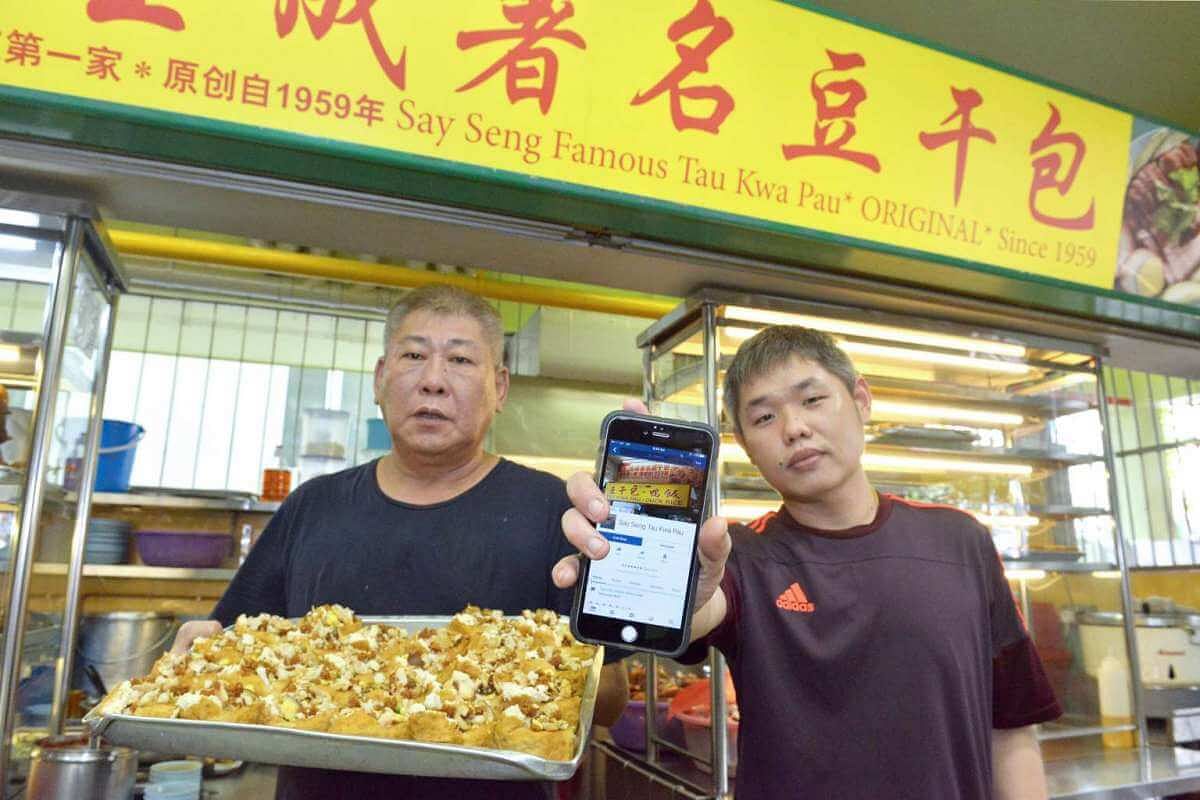Old-school trades use social media to draw new customers
Traditional shops are embracing social media in their efforts to reach out to a younger generation


These days, you can pick out classic cheongsam from an Instagram feed or order some old-fashioned Teochew tau kwa pau through Facebook.
They are among the dying trades that have found a new lifeline by venturing onto social media.
The likes of Facebook and Instagram are helping some traditional shops that face an ageing clientele and competition from e-commerce.
But old dogs can learn new tricks.
The Sunday Times takes a look at four old-school businesses that are getting in on the social media game.
Novel marketing of cheongsam

Tucked away in a corner of Chinatown, the cluttered premises of Golden Scissor Cheongsam are packed to the brim with cheongsam in all cuts and colours.
In the past, customers of this 10-year-old shop would have had to rifle through the array of traditional Chinese outfits to find the piece they wanted.
But now, they are just as likely to walk in armed with a smartphone, on which they can scroll through the shop's Instagram feed and point out the designs that catch their eye.
The shop's owner, Madam Li Qiying, 50, had not heard of Instagram until a year ago, when she befriended a young customer who helped her set up accounts for the shop on social media.
Since then, its Instagram and Facebook accounts, each with more than 1,000 followers, have garnered growing attention online, especially from younger clientele looking to add a touch of tradition to their wardrobe.
Madam Li, who is married with two sons, estimates this has boosted business by about 10 per cent.
While the shop is bursting with off-the-rack designs, mostly by Madam Li, it also offers bespoke and alteration services for customers.
Designs range from traditional wedding tea ceremony outfits to modern cuts with flared waistlines and halter-necks with daringly low backs.
Madam Li is also experimenting more with fun prints, such as bunnies, polka dots or a coffee-themed design.
Prices for cheongsam range from $68 for a simple cotton print to $398 for a dress made from an expensive material, such as tea silk.
She was hesitant about social media at first.
"I have always done things in a very traditional way," says the seamstress of more than 30 years, who still makes most of her cheongsam on an Expert Shanghai sewing machine.
"To these young people, social media is as natural as breathing. To me, it seemed so complicated."
Her customer, 25-year-old civil servant Lin Tong, showed her otherwise. In her spare time, she taught Madam Li how to use the apps on her phone and tutored her on the fine art of #ootd or "outfit of the day" photos.

Besides posting snapshots of the cheongsam on mannequins, Madam Li also encourages her customers to pose for photos while trying out the clothes or to send in pictures of themselves modelling their purchases.
A photo that gets many "likes" often helps her sell out the entire stock of the design, she says.
Besides bringing more footfall to her shop in People's Park Complex, being on Facebook has also helped her reach out to customers overseas.
One such client, a Singaporean tango dancer based in Dubai, ordered a custom-made cheongsam-style dance costume over Facebook Messenger and picked it up when she came to Singapore on vacation.
Ms Lin, who continues to be a regular customer at Golden Scissor, says she is glad the cheongsam is getting its time in the spotlight.
"I think the cheongsam is timeless and I would love to see more people in my generation re-interpret it for themselves," she says.
GOLDEN SCISSOR CHEONGSAM
Where: 02-1114 People's Park Complex, Block 32 New Market Road
When: 1 to 8pm daily
Info: Call 8163-0178 or go to www.facebook.com/goldenscissorcheongsam or www.instagram.com/goldenscissorcheongsam
Roping in the young to revive kebaya business

Mr Zuhri Sukaimi, 54, takes the "mod" in his shop Mod Kebaya very seriously.
The baju kurung and kebaya in his Kampung Glam shop have avant- garde designs such as mermaid pants with flared bottoms, or bold patterns such as colourful stripes, huge checks or sequins.
Most recently, he produced a new "military issue" line of outfits based on the camouflage patterns of army uniforms.
He has high-concept photoshoots too. On social media, one can see images of models wearing his outfits and posing against vintage cars. Another set of images shows them strutting down the bustling streets of New York City.
The eight-year-old Mod Kebaya has a blog and a Facebook account with more than 26,300 followers, as well as Instagram, Twitter and YouTube accounts.
His younger shop assistants, such as his three teenage nieces who work there part-time, help him upload and caption the social media posts.
His son, 27, who works in television production, also helps him organise photo and video shoots.
Mr Zuhri, who designs the kebaya and has them made in a workshop in Jalan Sultan, says the shop went on social media to keep up with other retailers who have an online presence.
He left a career in banking for a cloth-cutting apprenticeship with an elderly Peninsula Plaza tailor. He then opened his own shop in 2008 to create modern designs of his own.
Previously, he relied more on magazine and television advertisements, as well as word-of-mouth, for sales.
But big e-retailers, such as Zalora, were threatening his business. His sales have fallen in the past year and he hopes social media can help to revive the flagging business.
He admits he is a Luddite, and does not use basic messaging apps such as WhatsApp. His son and nieces help him to market the products online.
"It has helped me bring in the young and they, in turn, will bring in their parents," he says, adding that even older folk have shown an interest in his modern designs.
He also learnt to use the live-chat platform, Skype, so that he could connect with customers in Malaysia and Australia and show them how to take their own measurements. This way, they need only make one trip to Singapore to collect their kebaya.
Using social media has its downsides.
He sometimes gets brickbats on Mod Kebaya's Facebook page from commenters who accuse him of photoshopping the exotic locales of his fashion shoots, which he does not, or of taking liberties with Malay culture.
"(The criticism) gets me down," he says. "But I know I must continue. In this business, we need to have social media to survive."
MOD KEBAYA
Where: 01-09 Golden Landmark Shopping Centre, 390 Victoria Street
When: Mondays to Saturdays, 1 to 7pm; closed on Sundays
Info: Call 6298-2243 or go to modkebaya.blogspot.sg, www.facebook.com/modkebaya, www.instagram.com/modkebaya, twitter.com/modkebaya or www.youtube.com/user/modkebaya
Website to teach the younger generation about ang ku kueh customs

He is just 35 years old, but Mr Kelvin Toh could well be the family elder one consults when there are questions about tradition. Well, at least on matters concerning ang ku kueh.
When a baby is born, what do you have to buy as gifts for friends and family? For a boy, pointy kueh called ang ee. If it is a girl, flat ang ku kueh.
And that is just for the first month. One year on, you will need a big ang ku kueh or a ka ta kueh. Then you pray to the gods and have the baby step on the kueh for an auspicious childhood.
Mr Toh is an expert on ang ku kueh because his family has been selling them for nearly 30 years.
Their shop is Ji Xiang Ang Ku Kueh in Everton Park and he has been fielding queries from a younger generation of customers on Facebook for the past year or so.
He gets six to seven questions a day, on top of order requests. He says: "These are not just snacks, they are a tradition. We need to educate people on which kind of ang ku kueh you need to celebrate the Jade Emperor's birthday, which kind for baby's first month and so on."
The shop, selling the Hokkien snack with sticky glutinous rice flour skin wrapped around a sweet filling, was started by his father, Mr Toh Poh Seek, 67, in 1988.
The elder Mr Toh has nominally retired, but still hangs around the shop. His wife, Mrs Toh Bong Yeo, 63, runs the business with the help of Kelvin, his brother and sister.
Kelvin used to manage a restaurant, but it closed down two years ago. So he returned to the family business and decided to update its practices to reach new customers.
Last year, capitalising on the wave of nostalgia for bygone eras that marked SG50, he and his siblings revived the shop's dormant Facebook page and set up a website for Ji Xiang.
The site allows customers to not only place orders - an ang ku kueh costs between 80 cents and $1.60, while a ka ta kueh costs $10 - but also find out more about the customs behind the kueh.
Online orders make up only 5 per cent of the business. "It's insignificant, but we have to start somewhere," says Kelvin, who is married and has a 19-month-old daughter.
In all his years, he says, he cannot recall seeing a new ang ku kueh shop open in Singapore.
"I know it's a dying trade. Right now, most of our business is with older folk, but soon, the younger generation are going to be the older ones and we will regret not reaching out to them sooner."
Next on the cards is a collaboration with delivery app Deliveroo, which could see the kueh being delivered in twos and threes to peckish office workers in the vicinity.
The elder Mr Toh, who is wary of online transactions and prefers cash in hand, at first resisted these new developments, which Kelvin and his siblings had to sneak in under his nose.
But in the end, the family realised that taking the business online was the way forward, especially since nothing else in the labour-intensive operation could be compromised.
Today, the kueh are still moulded and filled by hand. The fillings - peanut, sesame, durian and more - are also prepared by hand. Even the banana leaf squares that the kueh sit on have to be cut by hand a lot of the time. "I have seen shops that do full mechanisation," says Kelvin. "They lack that human touch. We want our customers to know that every ang ku kueh they eat was shaped with our hands."
JI XIANG ANG KU KUEH
Where: Block 1 Everton Park, 01-33
When: Mondays to Saturdays, 8am to 5pm; closed on Sundays and public holidays
Info: Call 6223-1631 or go to jixiangconfectionery.com.sg or www.facebook.com/JiXiangConfectionery.AngKuKueh
Tau kwa pau stall used Facebook to announce move
When Mr Khoo Lian Hwa, 55, had to suddenly move his famous tau kwa pau hawker stall from Tanjong Katong, he was worried that there wasn't enough time to inform his customers of the new address.

Say Seng Tau Kwa Pau, which was started by his father from a pushcart in 1959, had been an iconic stall for more than 30 years in the now-defunct coffee shop at the junction of Joo Chiat and East Coast roads.
It moved to the Peranakan Food Village in Tanjong Katong five years ago, but had to relocate again in February because the Government needed the land for something else.
But regulars knew of the move, thanks to the Facebook page set up by Mr Toh Wei Kwan, a nephew of Mr Khoo.
Mr Toh, 30, who also works at the stall, says: "A lot of customers told us, 'Luckily you have Facebook, otherwise we cannot find you'. Many elderly uncles and aunties who are our regulars got their children to search online and track us down."
He set up the Facebook page a year ago to raise awareness of tau kwa pau, which is rare in Singapore. It is an old-fashioned Teochew snack of fried beancurd stuffed with chopped fish cake, cucumber, braised egg and fried yam.
"Our tau kwa pau is a traditional food that only the older generation will come to buy," he says.
"I wanted to attract more young people. Many of them do not know what a tau kwa pau is."
After he set up the page, customers started ordering tau kwa pau by messaging him on Facebook.
Many of them resort to this, says Mr Toh, because his elderly co- worker, who mans the stall's main phone line, can be slow to answer calls.
Now Mr Toh, who is married and has a daughter, gets between one and eight orders a week through Facebook Messenger.
They prepare the tau kwa pau, which cost $1.50 each, and people pick them up from the stall.
It sells between 400 and 500 tau kwa pau a week, down from more than 500 at its Katong location.
Mr Toh says he would like to expand the stall's social media reach further, "but only if we don't have to pay for it".
He adds: "Right now, we are happy just to survive and hope more young people will eat our tau kwa pau."
SAY SENG TAU KWA PAU
Where: 01-05 Dunman Food Centre, 271 Onan Road
When: Tuesdays to Sundays, 7am to 5pm; closed on Mondays
Info: Call 9488-7736 or go to www.facebook.com/Say-Seng-Tau-Kwa-Pau-449698058415526/
Li Qiying on how social media helped her business. Go to http://str.sg/4gLv
Join ST's Telegram channel and get the latest breaking news delivered to you.
A version of this article appeared in the print edition of The Sunday Times on November 13, 2016, with the headline Old-school trades use social media to draw new customers. Subscribe

